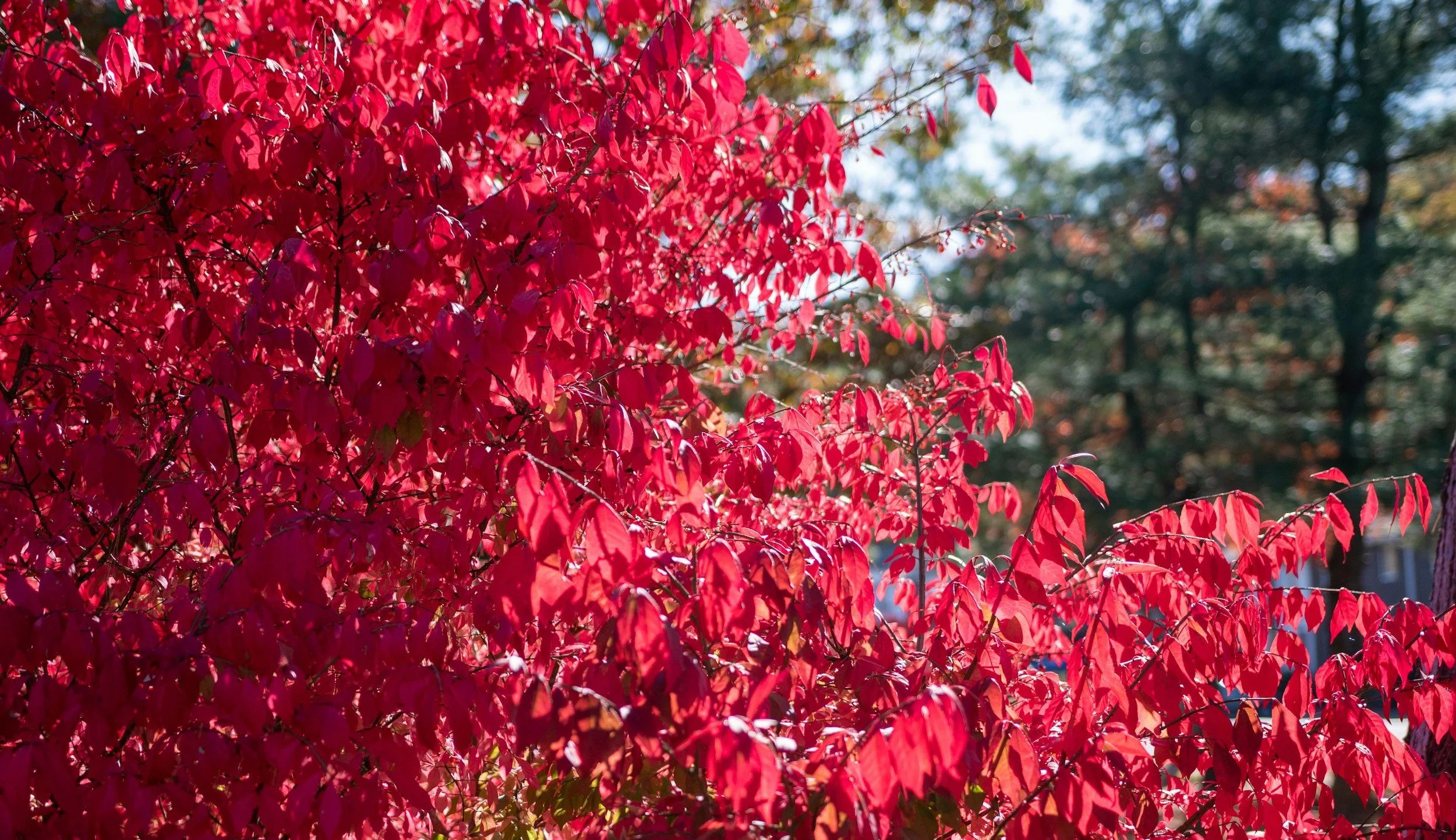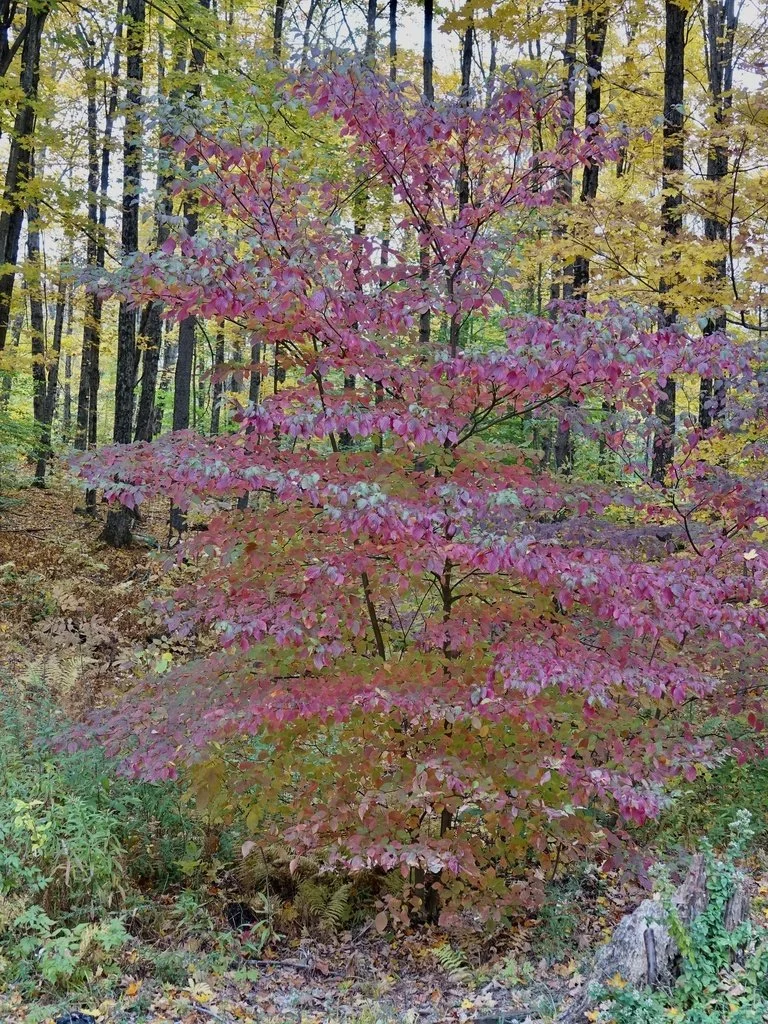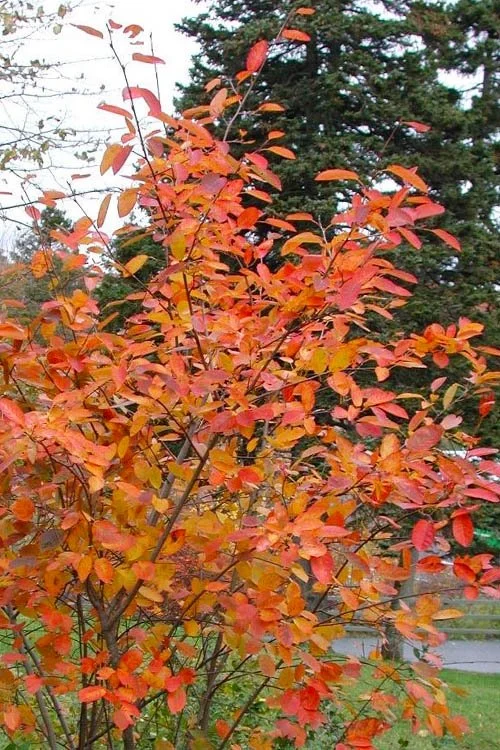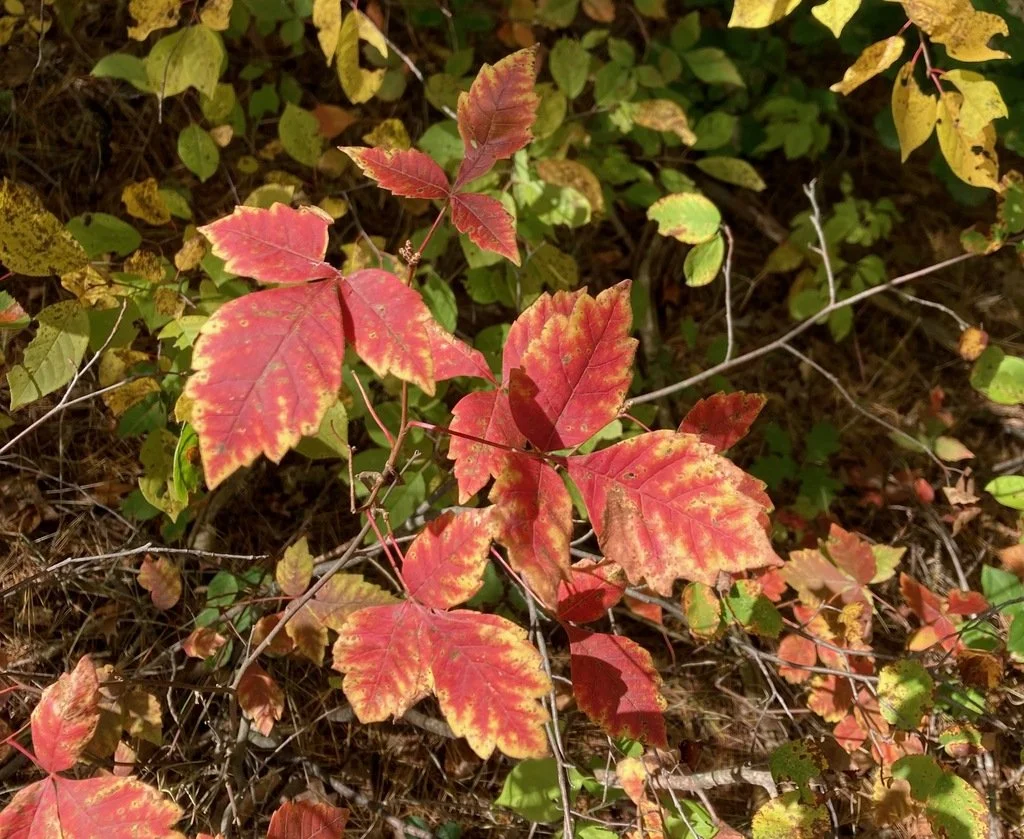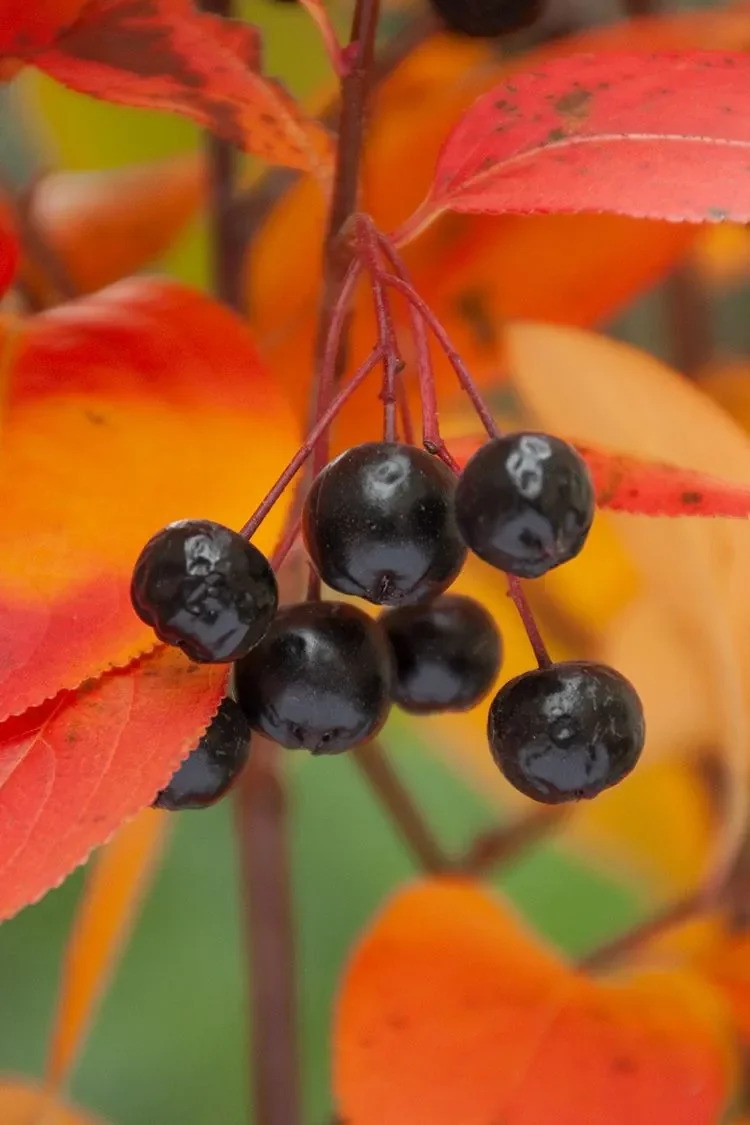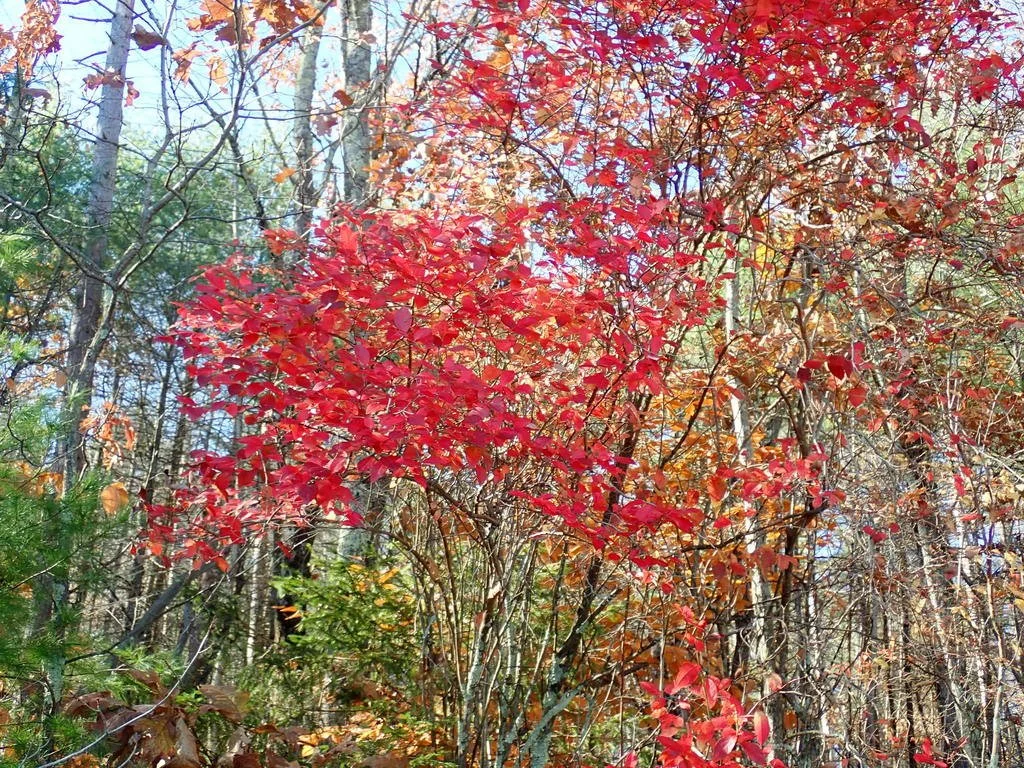How to stop the burning bush in your yard from destroying forests
Burning bush is a popular garden shrub that has become an invasive species across much of eastern North America. It spreads aggressively into forests, outcompetes native plants, and reduces biodiversity. Learn how to properly remove the burning bush in your yard, and discover beautiful native alternatives that support, rather than harm, local ecosystems and wildlife.
Burning bush (winged euonymus / Euonymus alatus) is one of the most popular landscaping plants in eastern North America, known for its fiery red foliage that mimics the natural beauty of the changing forest. If you’re not familiar with this plant, take a walk in any neighbourhood in late September or October and its brilliant red leaves will certainly catch your eye on every block. Many landscapers include burning bush in both residential and commercial designs because it’s easy to care for, grows rapidly and provides a stunning element to the garden in the fall months. But what most people don’t realize is that these same traits make it a threat to biodiversity.
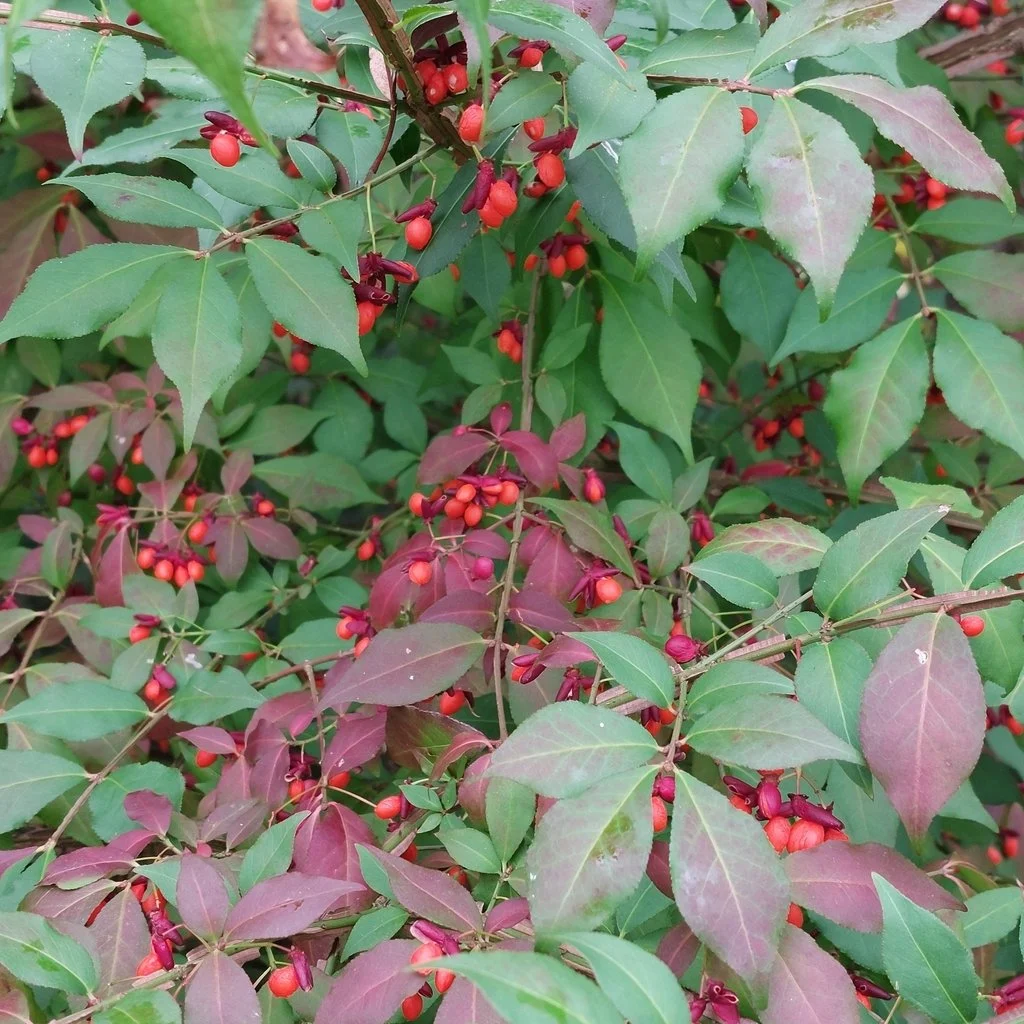


Bright red berries, characteristic "wings" of cork-like bark, flaming red fall foliage (Source: iNaturalist).
Why burning bush is a problem
Burning bush produces bright red berries that attract birds. They’ll fly into a bush, devour the berries and deposit them en route to their next destination, far beyond garden boundaries. The seeds germinate easily in a variety of conditions and form dense thickets that crowd out native plants, block sunlight from the forest floor, and make it difficult for trees to regenerate.
Over time, these escaped garden plants alter entire ecosystems, reducing food and shelter for wildlife. It might look beautiful in the fall, but the cost to biodiversity is high.
Escaped garden plants - burning bushes in the forest (Source: Leslie J. Mehrhoff, University of Connecticut, Bugwood.org).
Burning bush may look beautiful in the garden, but it contributes to the loss of biodiversity in natural ecosystems.
How to properly remove and dispose of burning bush
If you’ve decided to remove your burning bush - fantastic! It’s a meaningful step toward restoring biodiversity in your own backyard. The good news is that burning bush has shallow roots, which makes removal fairly straightforward with the right tools and timing.
Step 1: Cut it down
Start by cutting the branches down close to the base. This makes digging easier and more manageable.
If your plant has already started producing berries, bag those branches in black plastic to prevent the seeds from spreading. Leave the bags in the sun for a couple of weeks to destroy any viable seeds.
(Tip: Plan your removal for spring or early summer, before berries appear, to skip this step)
Step 2: Dig it up
If your burning bush has a single main stem, a weed wrench (such as the Canadian-made Pullerbear) can help pull it up by the roots.
For multi-stemmed plants, use a shovel or mattock to dig around the root ball until you can loosen and pull the plant free.
Once the main root system is out, use a garden fork to sift through the soil and remove any remaining root fragments that could re-sprout.
Step 3: Dispose of plant material safely
Roots and seeds are the viable parts that need to be destroyed in order to prevent further spread. Here’s how:
Roots: Leave them in direct sunlight to dry completely before disposal.
Seeds: Keep them sealed in black garbage bags and solarize (bake in the sun) for 2–3 weeks.
Branches can be left as wildlife brush piles, chipped for mulch or picked up through your municipal yard waste program.
(Tip: Proper disposal ensures your hard work doesn’t accidentally lead to new infestations elsewhere)
For more detailed information, check the Ontario Invasive Plant Council’s Best Management Practices documents for invasive species like burning bush, providing step-by-step guidance based on scientific research.
Watch @theurbanbotanist and I remove a very old burning bush here!
Native plant alternatives for burning bush
Now that your burning bush is gone, it’s time to fill that space with something that brings beauty and supports biodiversity. Luckily, there are many native trees and shrubs that offer vibrant fall colour, attract wildlife, and thrive in a range of conditions - all without the invasive impact.
Burning bush can take many forms: a small tree, a dense shrub, or a formal hedge. It tolerates sun or shade and a variety of soil types, so choosing a native plant replacement depends on your particular site.
Here are a few excellent options that match burning bush’s stunning colour - without the invasive impact:
Small native trees
Pagoda dogwood (Source: iNaturalist).
Pagoda dogwood (Cornus alternifolia):
If you’re looking for a graceful tree with beautiful fall foliage, this one is for you! It is an understory or forest edge tree, so does well in part shade conditions. The horizontal branches produce clusters of white flowers in the spring, which help support many different species of insects. These flowers turn into reddish-purple berries which are devoured quickly by hungry birds.
Serviceberry in tree form (Source: iNaturalist).
Serviceberry (Amelanchier spp.):
There are a few different species of Amelanchiers, some of which grow in single-stem, understory tree form. All have lovely white flowers in the earliest days of spring. These flowers provide crucial food sources for early season insects, like overwintering queen bumblebees and eastern comma butterflies. Its red berries get quickly snatched up by birds (and are edible for humans too!). Come fall, its leaves turn into incredible orange and red colours.
Native shrubs
Serviceberry (Amelanchier spp.) - shrub form:
Some species of serviceberry grow as multi-stemmed shrubs rather than single trees, offering the same benefits in a more compact form.
Fragrant sumac (Rhus aromatica): This hardy shrub bursts into fiery orange and red in the fall. Its flowers support butterflies, its berries feed overwintering birds, and its dense growth offers excellent wildlife habitat. It reaches about 1–2 metres high and spreads slowly by suckers - a great natural hedge alternative.
Black Chokeberry (Aronia melanocarpa): Glossy leaves, white spring flowers, deep purple-black berries, and brilliant red fall colour make this native shrub a stunning replacement for smaller burning bushes. It prefers part shade and medium-wet soils.
Northern bush honeysuckle (Diervilla lonicera): A great plant for part-shade to shady conditions and dry soil. It grows to about 1 metre (3 ft) tall, with yellow summer flowers that feed native bees and leaves that shift from green to yellow to red by autumn.
Blueberry (Vaccinium spp.): If you have a sunny location, native blueberries are an excellent choice - they support pollinators, provide food for birds (and you!), and offer vivid red fall foliage.
These are all great native plants to replace your burning bush with, and support your local ecosystem in the process - you can also consider adding some native perennials and ground covers along with the trees or shrubs in order to increase biodiversity in your landscape. Your local butterfly, bee and bird populations will appreciate the support! Check out some of the resources below to find plants suitable for your site.
By replacing invasive plants like burning bush with native alternatives, you help restore balance to local ecosystems - one garden at a time.
Reconnect your garden with nature
Removing an invasive plant like burning bush might seem like a small act, but it’s part of a much larger movement to protect biodiversity and restore balance. Each time a homeowner replaces an invasive species with native plants, they create new habitat, strengthen local food webs, and support pollinators and wildlife.
If you’ve already taken this step - great work! Share your success, inspire your neighbours and keep learning about native alternatives for your garden plants. Small, local actions add up to big ecological change.
Take the first step toward restoration - plant native and reconnect your garden with nature.
Need help choosing native plants or designing an ecologically supportive landscape?
Contact us to start your habitat garden project.
Resources:
Canadensys - Database of Vascular Plants of Canada (VASCAN)
Canadian Wildlife Federation: Native Plant Suppliers List
Credit Valley Conservation Authority - Priority Invasive Plants
Homegrown National Park: Native Plant Resource Directory
National Wildlife Federation - Ecological landscape design
Native Plant Connection: Native Plant Nurseries in Ontario
Network of Nature: Native Plant Nurseries in Canada
Ontario Invasive Plant Council - Winged Euonymus Best Management Practices
Pollinator Partnership Canada - Ecoregional planting guides
Pullerbear - Weed wrench
USDA - Plants Database
Reconnect - Native Plant Nursery
The Urban Botanist - Don’t Plant This! It’s Wrecking your Garden

